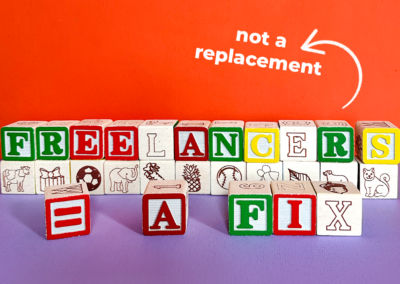2020 was far from a normal year. Practically overnight, a large part of the workforce shifted to remote work, and our resilience was tested in new ways. And yet, at first people reported that they had never been happier at work — or with their employers. How did we go from record gains in employee happiness to finding ourselves in the midst of the Great Resignation?
What Happened?
As part of their ongoing research, coaching and development company BetterUp tracks the overall sentiment people have towards their employers. This figure is called eNPS, or employer net promoter score. A report by BetterUp behavioral scientist, Erin Eatough, who has been researching what makes people happy at work for more than fifteen years, found the following:
Between February 2020 and April 2020, the average favorability of employees toward their employers skyrocketed by more than 200%. People liked their employers twice as much — a pretty unbelievable shift in such a short period of time.
Despite the difficulties we faced in early 2020, people found themselves more satisfied with their work and their employers. Over eighteen months into the pandemic employee sentiment certainly has changed.
So what’s the difference? In her article, Eatough observes that when the pandemic struck — possibly for the first time — employers were forced to interact with their employees as whole people. She says:
“My hypothesis is that it largely hinges on the rapid, unexpected engagement with humanity that was brought on through the collective crisis and trauma. Organizations, and leaders, suddenly couldn’t ignore that every employee was also a human being with physical health and safety needs, relationships and responsibilities that had to be accounted for, and mental and emotional needs that were suddenly bigger and right at the surface.”
For years, employers and employees alike have been taught to keep their drama, and their personal lives, out of the office. Yet, in the efforts to keep work “clean” we never considered the damage of compartmentalizing the biggest parts of our lives.
Leading with empathy
What works about bringing your whole self to work, even in times of crisis? The answer seems to be empathy. For a while, it was normal to not be okay. There was no expectation that people would be fully focused on their work. Managers understood that the lines between work and home would blur, that emergencies would happen, and that sick days were in fact, a matter of public health.
However, at some point, the other shoe dropped, and organizations began to make decisions about how, when, and if they would bring employees back into the office. What many failed to realize was that this choice wasn’t a purely economic decision for their staff. For many, it was a matter of life and death. Having experienced choice for (possibly) the first time in their working careers, many pushed back on coming back to work. And a lot of them just quit.
The truth is, the Great Resignation was brewing long before the pandemic. But the global crisis — and the changes that accompanied it — were the factors that put it over the top. COVID provided the trigger for something researchers term “turnover shock” — the desire to re-evaluate their lives and job satisfaction in the face of major change. Employees have begun to search for environments that make them feel valued. They’re wondering, “When the next major crisis comes, will it be okay to not be okay?”
Unringing the bell
So what is the lesson that we should be taking away from the last year and a half? People need to feel safe to do their best work — or to choose to stay at their jobs at all. Alison Omens, chief strategy officer of JUST Capital, says, “The early days of the pandemic reminded us that people are not machines.”
Employees can’t be expected to work regardless of circumstances, feelings, and concerns. But when they’re allowed to be people, with all of those things, they reward their employers with greater loyalty and productivity.
Years from now, Industrial and organizational psychologists will study the rapid pace of change in the workplace that happened in the first quarter of 2020. Advances in HR policy, flexible work arrangements, and our understanding of work/life balance that would have evolved over decades happened in weeks. And, as the saying goes, the bell can’t be unrung. Those changes made people feel seen and cared for, and they’re not willing to go back. In fact, they’ll quit before they do.
If companies want to retain their talent, they need to start by keeping the changes they made when their backs were against the wall. Even if, ultimately, some of those changes prove to be untenable, employers can’t try to get away with handing down edicts, preaching that “safety” is their number one concern as they erode psychological security. The new workplace will only work as a partnership between employers and the employees they hope to retain. Otherwise, they may find themselves staring at empty offices for a lot longer than they think.
Allaya’s Socials & Website: Instagram, LinkedIn, Website
Editor’s Socials – Elisa Camahort Page: Instagram, Twitter, LinkedIn



